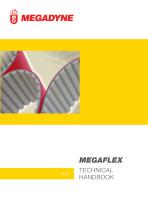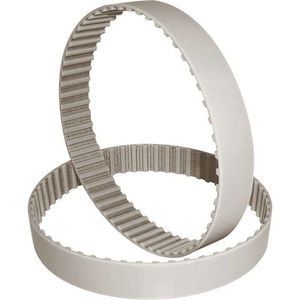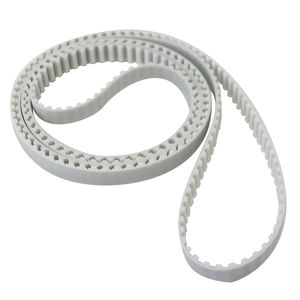
- Company
- Products
- Catalogs
- News & Trends
- Exhibitions
Timing belt MEGAFLEX XMDendlesspolyurethaneglass

Add to favorites
Compare this product
Characteristics
- Type
- endless, timing
- Material
- polyurethane
- Product applications
- for material handling equipment, for aluminum, for automobiles, glass
- Sector
- for the food industry, for the textile industry, for the automotive industry, for the paper industry, medical
- Hardness
- 92 shore A
- Other characteristics
- maintenance-free, flexible, smooth, high-resistance, oil-resistant, chemical-resistant
- Pitch
Max.: 22.225 mm
(0.875 in)Min.: 5 mm
(0.197 in)- Temperature
Max.: 80 °C
(176 °F)Min.: -25 °C
(-13 °F)
Description
Belt and cleat fragments from all Megalinear XMD and Megaflex XMD belts can be spotted by metal and x-ray detectors, thanks to a special compound used in the manufacture of these timing belts and their accessories. Therefore, any Food Contact Timing Belts (open end, endless joined, and truly endless) constructed with this compound are detectable. This Food Safety feature is in addition to other special hygienic design features that include sealed edges and the use of blue as a contrast colour. Therefore, all Food Contact Timing Belts (open end, endless joined, and truly endless) constructed with this compound are detectable!
Megaflex timing belts are manufactured in thermoplastic polyurethane, with continuous spiral steel cords. this type of belt, developed by our research & development, offers good running characteristics and high traction loads.
They are especially suited for power transmission and conveying with high loads and high speeds (up to 10.000 rpm). The addition of a nylon coating on the teeth during production enhances the running properties for specific applications and reduces the noise frictional coefficient. An extra thickness of special coating is also possible on the back of the belt offering extra protection against aggressive or heavy products.
Megaflex belts are truly endless, enabling them to deliver exceptional performance.
Features
MEGAFLEX is manufactured to the customer’s length specification.
This belt is especially suitable for power transmission and conveyor applications with high load and high speed.
VIDEO
Catalogs
MEGAFLEX technical handbook
58 Pages
Related Searches
- MEGADYNE transmission belt
- MEGADYNE industrial belt
- MEGADYNE rubber belt
- Rigid shaft coupling
- MEGADYNE plastic belt
- Transmission shaft coupling
- MEGADYNE toothed belt
- Sleeve shaft coupling
- MEGADYNE sturdy belt
- MEGADYNE industrial belt
- MEGADYNE polyurethane belt
- MEGADYNE poly V belt
- MEGADYNE synchronous belt
- Flat strip
- MEGADYNE oil-resistant belt
- Metal pulley
- MEGADYNE elastic belt
- Toothed pulley
- MEGADYNE high-performance belt
- MEGADYNE high-resistance belt
*Prices are pre-tax. They exclude delivery charges and customs duties and do not include additional charges for installation or activation options. Prices are indicative only and may vary by country, with changes to the cost of raw materials and exchange rates.







